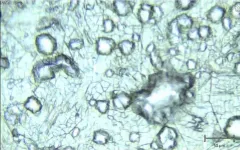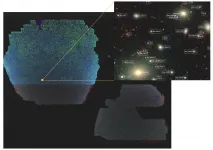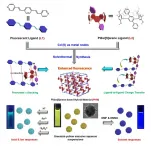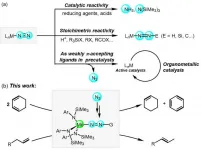Giving the hydrogen economy an acid test
2021-01-14
(Press-News.org) Scientists at the University of Tsukuba show that using a layer of graphene just one atom thick improves the catalytic activity of nickel or copper when generating hydrogen gas, which may lead to cheaper fuel for zero-emission automobiles
Tsukuba, Japan - A team of researchers led by the Institute of Applied Physics at the University of Tsukuba has demonstrated a method for producing acid-resistant catalysts by covering them with layers of graphene. They show that using few layers allows for greater proton penetration during a hydrogen evolution reaction, which is crucial for maximizing the efficiency when producing H2 as fuel. This work may lead to industrial-scale manufacturing of hydrogen as a completely renewable energy source for vehicles that do not contribute to climate change.
The dream of hydrogen-powered cars has excited many people as a solution for the huge amount of carbon dioxide fossil-fuel burning vehicles emit into the atmosphere daily. However, the production of hydrogen gas has been slowed by the lack of cheap catalysts required to split water efficiently. In this process, hydrogen nuclei, called protons, need to combine to form hydrogen gas, H2. Nickel and Ni-based alloy are seen as promising cheap alternatives to platinum, but these metals corrode easily when exposed to the acidic conditions of the reaction. One solution is to use graphene, a single sheet of carbon atoms arranged in a honeycomb lattice, to protect the catalyst. However, the mechanism by which the reaction takes place remained poorly understood.
Now, an international research collaboration led by the University of Tsukuba has shown that using three-five layers of graphene can efficiently prevent corrosion while still partly allowing protons to combine at the catalyst through defects in the honeycomb structure. In addition, they found that the catalytic efficiency decreased linearly as more layers of graphene were added. "This result allowed us to conclude that protons must penetrate through the graphene layers in order to react at the surface of the metal" says Dr. Kailong Hu, senior author on the study. The alternative explanation, that electrons travel up from the metal so the protons can react at the outer surface of the graphene, was not a major reaction process supported by the experiments. Future work will focus on the optimization of the number of graphene layers to balance the corrosion resistance with catalytic activity.
"Hydrogen fuel is particularly eco-friendly because it produces zero greenhouse gasses, and still has a larger energy density than gasoline," Professor Yoshikazu Ito explains. "So, we may soon be able to step on the accelerator without leaving a carbon footprint." The work is published in Nature Communications as "Catalytic Activity of Graphene-Covered Non-Noble Metals Governed by Proton Penetration in Electrochemical Hydrogen Evolution Reaction" (DOI: 10.1038/s41467-020-20503-7).
INFORMATION:
[Attachments] See images for this press release:

ELSE PRESS RELEASES FROM THIS DATE:
2021-01-14
The Beijing-Arizona Sky Survey (BASS) team of National Astronomical Observatories of Chinese Academy of Sciences (NAOC) and their collaborators of the Dark Energy Spectroscopic Instrument (DESI) project released a giant 2D map of the universe, which paves the way for the upcoming new-generation dark energy spectroscopic survey.
Modern astronomical observations reveal that the universe is expanding and appears to be accelerating. The power driving the expansion of the universe is called dark energy by astronomers. The dark energy is still a mystery and accounts for about 68% of the substance ...
2021-01-14
Organic luminescent materials have been highlighted as an exciting research topic owing to their prominent potentials in light-emitting diodes, fluorescent sensors, optoelectronic devices, in vivo imaging, anti-counterfeiting, data storage, and information encryption. However, applications of tunable fluorescent materials in the solid states have been largely hampered because these luminescent systems generally require time-consuming organic synthesis procedures and suffer from reduced photoluminescence (PL) owing to the notorious aggregation caused quenching. Aggregation-induced ...
2021-01-14
As an elementary type of collective excitation, plasmon has been found to dominate the optical properties of metals. The collective behavior of electrons in plasmons reflects the important difference between condensed matter and molecule-like ones. It is of great significance to study the evolution of plasmonic response and find out the boundary.
Controversy exists on such interesting questions as the division between the nanoparticle and molecules, and the physics of mesoscopic and microscopic plasmonic evolution. A unified understanding covering the small and large size limit, namely macro / meso / micro scales with sufficiently atomic precision is thus required. Clusters, as the transition from atomic molecules to condensed matter, are the ideal candidate for studying the evolution ...
2021-01-14
Making people stand in front of a scanner to have their body temperature read can result in a large number of false negatives, allowing people with Covid-19 to pass through airports and hospitals undetected.
A new study argues that taking temperature readings of a person's fingertip and eye would give a significantly better and more reliable reading and help identify those with fever.
The study, co-led by human physiologist and an expert in temperature regulation, Professor Mike Tipton, is published in Experimental Physiology.
Professor Tipton, ...
2021-01-14
Dinitrogen (N2) fixation is considered as one of the most essential tasks in basic science, providing straightforward methods to produce ammonia and nitrogen-containing molecules. Exploring the reactivity of N2 units of transition metal-nitrogen complexes is of great significance and challenging in the chemistry. Since the first Ru-N2 complex was prepared in 1965, important progress has been made in the synthesis and reactivity of transition metal nitrogen complexes. In many cases, terminal end-on M-N2 complexes as the most prevalent bonding mode were proved ...
2021-01-14
In a new study, an international research team led by Sebastian Stumpf from the University of Vienna describes an exceptionally well-preserved skeleton of the ancient shark Asteracanthus. This extremely rare fossil find comes from the famous Solnhofen limestones in Bavaria, which was formed in a tropical-subtropical lagoon landscape during the Late Jurassic, about 150 million years ago. The almost complete skeleton shows that Asteracanthus was two-and-a-half meters long in life, which makes this ancient shark one of the largest of its time. The study is published in the journal Papers in Palaeontology.
Cartilaginous fishes, which include sharks and rays, are one of the most successful vertebrate groups still ...
2021-01-14
Climate and changes in it have direct impacts on species of plant and animals - but climate may also shape more complex biological systems like food webs. Now a research group from the University of Helsinki has investigated how micro-climate shapes each level of the ecosystem, from species' abundances in predator communities to parasitism rates in key herbivores, and ultimately to damage suffered by plants. The results reveal how climate change may drastically reshape northern ecosystems.
Understanding the impact of climatic conditions on species interactions is imperative, as these interactions include such potent ecological forces as herbivory, pollination and parasitism.
Lead researcher Tuomas Kankaanpaa from the Faculty of Agriculture and Forestry, University of Helsinki, investigated ...
2021-01-14
Astronomers using images from Kitt Peak National Observatory and Cerro Tololo Inter-American Observatory have created the largest ever map of the sky, comprising over a billion galaxies. The ninth and final data release from the ambitious DESI Legacy Imaging Surveys sets the stage for a ground-breaking 5-year survey with the Dark Energy Spectroscopic Instrument (DESI), which aims to provide new insights into the nature of dark energy. The map was released today at the January 2021 meeting of the American Astronomical Society.
For millennia humans have used maps to understand and navigate our world and put ourselves in context: we rely on maps to show us where we are, where we came from, and where we're going. Astronomical maps continue this tradition on a vast scale. They ...
2021-01-14
University of Otago researchers have added another piece to the puzzle about how best to translocate New Zealand lizards for conservation purposes - confine them.
In a paper just published in the New Zealand Journal of Ecology, the Department of Zoology researchers outlined how they translocated 19 barking geckos to Mana Island, using the method of penned release - enclosing them in a 100m² pen for three months so they get used to the site and hopefully establish a breeding population.
It was the first time such a method had been used with the species and the researchers found it worked well. The geckos' area use decreased over time, indicating ...
2021-01-14
There are many components to aging, both mental and physical. When it comes to the infrastructure of the human body - the musculoskeletal system that includes muscles, bones, tendons and cartilage - age-associated decline is inevitable, and the rate of that decline increases the older we get. The loss of muscle function -- and often muscle mass -- is scientifically known as sarcopenia or dynapenia.
For adults in their 40s, sarcopenia is hardly noticeable -- about 3% muscle mass is lost each decade. For those aged 65 years and older, however, muscle decline can become much more rapid, with an average loss of 1% muscle mass each year. More importantly, sarcopenia is also marked by a decrease ...
LAST 30 PRESS RELEASES:
[Press-News.org] Giving the hydrogen economy an acid test






